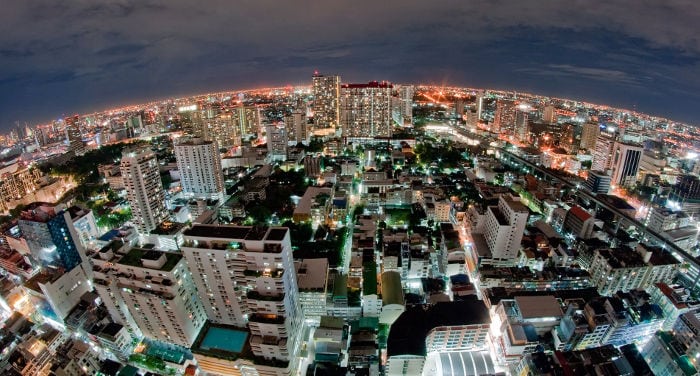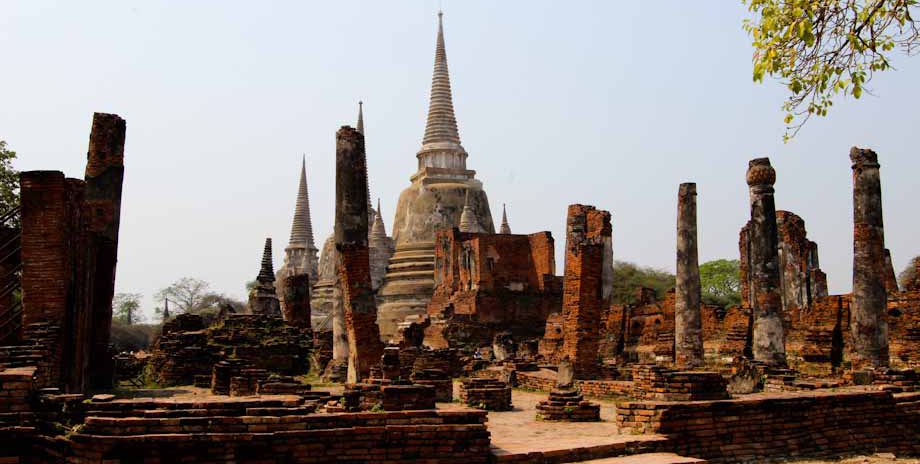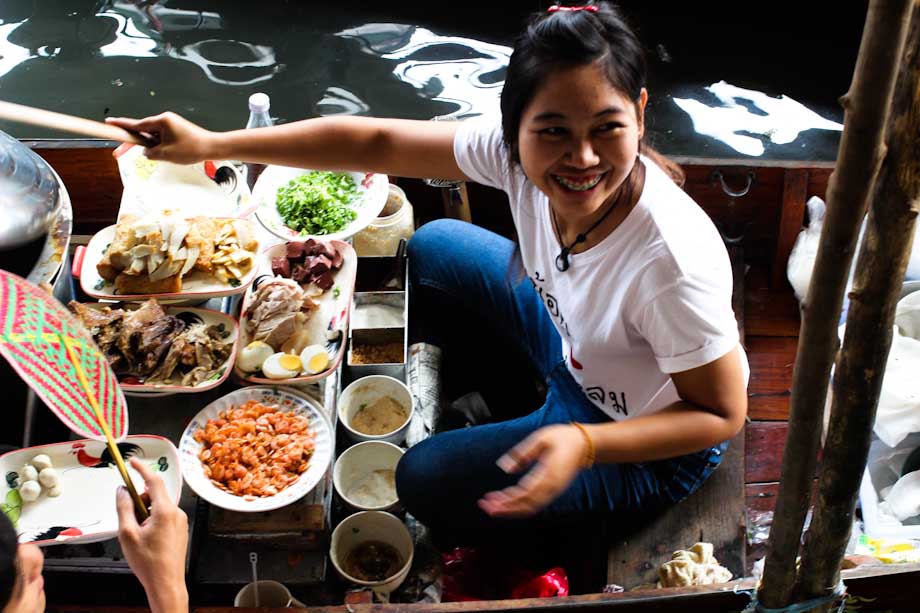
One of the first things you have to do once you land in Bangkok with the intentions of staying for awhile, is to look for someplace to live for a mid-to long-term period.
Finding a house in one of the largest cities in Southeast Asia can be a hard and often expensive undertaking, both in terms of physical energy and money, especially if you’re not aware of information that can simplify (even by a lot!) the search.
Keep reading to learn which are the best neighborhoods to find a house in Bangkok, what the different types of properties are, related costs and how to find an apartment (agents and contracts).
Where to look for a house in Bangkok?
The first thing to do when looking for an apartment or house in Bangkok is to open a city map where the two elevated train lines are indicated, called Sky Train or more commonly BTS, which connects the eastern parts, northern areas and southern zone of the city, which are easily found near all the stops, and is available here in digital form.
The stops along the train routes, a light and dark green, reflect those that are considered the various regions of the city, which will be useful to know when you go looking for a house on the larger Thai real estate internet sites, where you’ll need to enter the name of the area where you want to look for a house.
What makes the biggest difference in finding a house or apartment in Bangkok, is really the distance from the property and the BTS, the elevated train that connects the eastern, northern and southern parts of the city.
Bangkok has a constant tropical climate that is very humid, which makes it difficult the majority of the time to walk long distances on foot. The first criteria for finding a place that best suits your needs is to choose a house – or condominium – located in an area relatively close to the Sky Train (or BTS).
There are basically two reasons for this: the first as mentioned is that the stifling heat is already in effect at six in the morning, the second is more along the lines of time and comfort factors. In particular, it’s important to keep in mind that the neighborhoods closest to the BTS are also where there are the most shops, restaurants, health facilities and means of transport of varying types, such as buses and taxis. In the outlying areas, there are few services available, such as transportation, which is key especially in the morning when you leave for work and don’t want to take hours to get there.
The most popular areas for foreigners, for the reasons listed above and also because many universities and international firms have their headquarters in this area, are those that face the green line of the BTS, called “Sukhumvit”, from the name of the street that goes from the center of Bangkok all the way to Patthaya.
In this area the available apartments in the various condominiums go from a low average price of 10.000 Thai Bath (300 USD) for a one-room apartment of 25 square meters, up to 3,000 USD and more for a 3 bedroom apartment located 20 meters from the most central stop of the Sky Train, Asoke. These areas, which include the stops Nana, Asoke, Prom Phong, Tong Lor, and Ekkamai, are those that are most dense with international restaurants, bars, discos, and shopping centers.
If instead you’re on a more restrictive budget and you’re looking for a quieter and cheaper area, Bangkok offers high standard apartments for all levels of income. A neighborhood that is constantly growing in terms of livability and range of choices for apartments and also restaurants and green parks is that of Ari.
The area takes its name from the synonymous BTS stop, close to which there is an expansive shopping complex that includes various restaurants and pubs, such as the more famous international food chains. In the eastern part of the city there’s Onut, one of the fastest growing regions of Bangkok, where for 500 USD you can find a two bedroom apartment not too far from the main transportation systems.
Property types and relative costs
In Thailand there are two main types of properties: houses and the so-called “condos” (or condominiums), which are the most popular options in terms of comfort and security.
Regarding the first category, prices vary much according to the area; you can find little houses with four bedrooms, located in residential complexes that have a shared gym and pool on the outskirts of Bangkok, for 500 USD a month, and also old shacks closer to the city center for 2,000 USD a month. An important factor to consider are the comforts that the townhouses in the center can’t offer due to a lack of space, which condominiums offer 95% of the time, even those considered mid-to-low standard.
The second category is called “condos” and refers to normal condominiums whose prices vary considerably according to their amenities. The majority of the condominiums have facilities, included in the price, that make you think of a resort: a security guard on duty outside 24/7, a receptionist able to help point you in the right direction if you need to pay bills, call an outside laundry service, find the covered parking lot, pool, sauna and even the gym.
Besides these comforts, in the rental contract there’s also a connection to local TV channels included; while water, power, and internet are deducted each month.
With the first two, when you rent an apartment the consumer is registered and a normal bill is sent out, which you can pay monthly at the condo’s reception desk or any 7/11. As far as internet goes, depending on the needs, you can get an annual contract starting from 20 USD a month with companies such as True, which also offers TV packages for watching international channels.
How to find a home in Bangkok: agents and contracts
When it comes to looking for an apartment there are two different options available. The first consists of doing a search with specific criteria such as neighborhood, budget, and number of rooms desired, into the more famous real estate websites, such as Thaiapartment.com, Mrroomfinder.com, or Hipflat.co.th.
These web pages allow you to contact the owner of the listing via mail or phone, which are for the most part real estate agents. Unlike many other countries, in Thailand real estate agents are paid by the apartment owners, so for the future renter there isn’t any cost.
There’s also no cost to you for the contract, which in the majority of cases will be for a minimum of one year. In accordance with the laws of the land, in Thailand only Thai citizens can rent property to other people.
After signing your contract you’ll be asked for a deposit equal to two months rent and the first month’s payment. What you need to pay most attention to during the rental agreement process has to do with the responsibility of maintenance of the property.
Since in Bangkok 90% of apartments are already furnished and include air conditioning, it’s good to make clear right away the Thai owner’s responsibility to check at least twice a year and have the air conditioners cleaned, because many times despite being written into the contract, owners don’t take care of the basic expenses which then fall to their future tenants.
Another possibility is to go directly to the various condominiums that interest you and ask to see a free unit at the building’s reception desk. Very often this turns out to be the best choice since it requires less time and money since there aren’t any real estate agents involved. This strategy can also allow you to negotiate a bit on the price directly with the owner because in Thailand even the rents are negotiable!
Photo Credits: ![]() Bangkok dangerous. by digitalpimp.
Bangkok dangerous. by digitalpimp.




You know at Parc Botannia is newly launched condominium. It is a 99-years leasehold property condominium development that is situated at Fernvale Rd off Fernvale Street in District 28. You’ll never know how this development will grant you the home and lifestyle you are looking for until you experience it yourself! Certainly, you won’t regret choosing this property as your new investment or home. But one thing is for sure – you won’t regret living here!